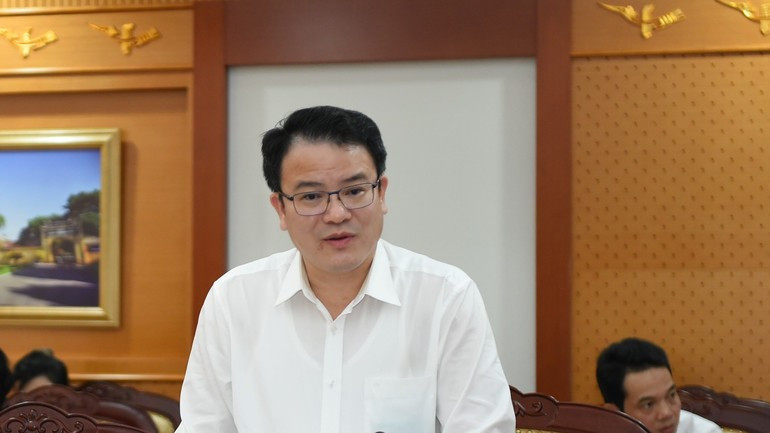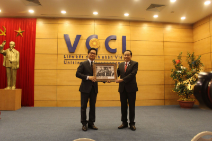Foreign-funded public investment disbursement urged to accelerate
The acceleration of public investment disbursement, particularly Official Development Assistance (ODA), plays a crucial role in achieving the GDP growth target of over 8% in 2025.

Deputy Minister of Finance Tran Quoc Phuong granted an interview to Nhan Dan Newspaper on this issue.
A crucial mission
Q: As of October 14, 2025, the disbursement of public investment funded by foreign capital by ministries, sectors, and localities has reached only 18.68% of the capital plan assigned by the Prime Minister. How will this slow progress affect the contribution of public investment to overall economic growth in 2025?
A: Since the beginning of the year, the disbursement of public investment has shown positive signs of improvement, yet it still falls short of the set targets. The Government has issued a series of resolutions and instructions to remove obstacles, but the pace of implementation remains slow.
Public investment funded by foreign capital accounts for a significant proportion of total public investment nationwide. Therefore, accelerating the disbursement of this capital is not only an urgent requirement to stimulate growth but also a key task to ensure the effective use of borrowed funds and maintain the country’s credibility with international partners.
Under Decision No. 1508/QD-TTg dated December 4, 2024 by the Prime Minister on the 2025 State budget investment plan, the total amount of foreign capital allocated from the Central budget to ministries, sectors, and localities exceeds 23.4 trillion VND (888.3 million USD), of which more than 11 trillion VND (417.6 million USD) is assigned to ministries and sectors, and 12.3 trillion VND (466.9 million USD) to localities. In addition, 15 ministries, sectors, and localities were allocated extended 2024 capital worth over 2.1 trillion VND (79.7 million USD).
As of October 14, 2025, ministries, sectors, and localities have distributed 85.63% of the capital plan assigned by the Prime Minister. However, the disbursement rate of public investment from foreign capital has reached only 18.68% (equivalent to more than 4.3 trillion VND, or 163.2 million USD). Notably, five ministries, sectors, and localities have yet to disburse any funds. This rate is lower than the same period last year and far below the Government’s 100% disbursement target stated in Resolution No. 273/NQ-CP.
Q: What are the causes of the slow disbursement of public investment from foreign capital? Traditional obstacles have been identified for years — why have they not been thoroughly resolved?
A: Although the legal framework, from laws to decrees and administrative mechanisms, has been significantly improved, several “bottlenecks” in public investment disbursement persist. Long-standing problems such as land clearance and compensation, cumbersome investment procedures, limited contractor capacity, and underperforming project management units remain unresolved.
For ongoing projects, the low disbursement rate of foreign-funded public investment mainly stems from the lack of completed work volume eligible for payment, delays in investment preparation, tendering, and contract signing.
Additionally, some projects are undergoing adjustments — in investment policy, project design, loan agreements, or capital plans — or face delays in receiving non-objection letters or approvals from donors regarding bidding documents or loan modifications.
The merger of administrative units and the transition to the two-tier local government model have also required certain projects to undertake donor-related administrative procedures. Furthermore, adverse weather and natural disasters have disrupted construction progress in some localities.
The Ministry of Finance held a conference with ministries, sectors, and localities on October 15 to address these challenges and promote disbursement in the final months of the year.
As 2025 marks the final year of the current term, recurring issues in public investment disbursement must be definitively resolved. The conference aimed for a shift in focus — from revisiting old problems to adopting more effective, results-oriented approaches.

Distinct challenges of 2025
Q: Has the implementation of the two-tier local government model since July 2025 affected the disbursement of public investment, particularly foreign-funded investment?
A: During the restructuring of administrative units and the establishment of two-tier local governments, the Government promptly issued 30 decrees defining decentralisation, delegation, and authority, including many provisions related to public investment disbursement, to serve as the basis for implementation by ministries, central agencies, and localities.
The Ministry of Finance has proactively provided guidance and handled issues related to on-lending contracts, worked with donors to amend loan agreements to ensure project continuity, and regularly met with major donors and local authorities to remove obstacles and accelerate ODA and concessional loan disbursement.
In terms of procedures, the Ministry has streamlined its processing workflow for withdrawal applications, cutting approval time to just one working day for valid documents, ensuring both timeliness and efficiency in public capital use. It has also issued documents to prepare for managing local government on-lending debt during the administrative restructuring and guided localities on handling contract adjustments following mergers.
These represent unique challenges in 2025. Encouragingly, reports indicate that localities with no disbursement yet have not faced difficulties related to the merger or the two-tier governance structure. For those experiencing difficulties, efforts must focus on personnel arrangements for fund withdrawal, accounting, project renaming or modification, and reorganising project management units.
Q: Many localities have proposed returning part of their allocated foreign-funded public investment. How will this affect overall disbursement performance nationwide, and what solutions are being considered?
A: The public investment system has recorded specific figures, and at the recent conference, several localities mentioned their intention to return unused funds. Some ministries and localities — such as the Ministry of Agriculture and Environment and the Viet Nam Academy of Science and Technology — have proposed returning a significant portion of their 2025 allocations.
The Ministry of Finance has acknowledged these requests and is working on solutions to report to the Prime Minister. The principle is that capital adjustments must be balanced nationwide — where reductions occur, corresponding increases must be made elsewhere. Once the Prime Minister’s allocation plan is issued, ministries, sectors, and localities must focus on its full implementation.
The year 2025 serves as a pivotal year — the acceleration and completion phase of the 2021–2025 Socio-Economic Development Plan — and also a preparatory stage for the 14th National Party Congress and a new development period. The Government and the Prime Minister have taken decisive action, issuing numerous resolutions and directives requiring accelerated progress and striving for 100% disbursement of public investment funds.
Although foreign-funded public investment disbursement has improved month by month, the sharpest increase occurred in the third quarter of 2025. To achieve the 100% target set out in Resolution No. 273/NQ-CP, ministries, sectors, localities, and project owners must take stronger, more decisive measures to fulfil their assigned responsibilities.








